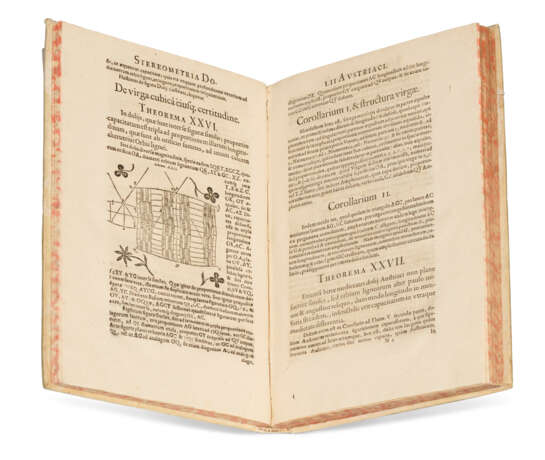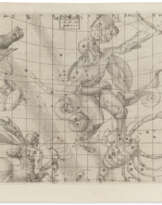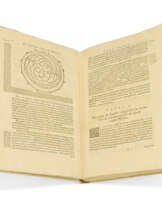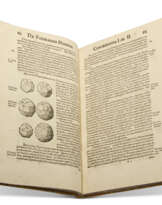ID 1360820
Lot 104 | Nova Stereometria
Estimate value
$ 15 000 – 25 000
First edition of "one of the most significant works in the history of mathematics" (Caspar) bound with the second edition of Kepler’s first book. After the death of his first wife, Kepler remarried in 1613 and settled in Linz. Kepler outfitted his new home with barrels of wine, but he questioned the method the wine merchant used to measure the volume of the barrels, which determined the price. Kepler proposed an innovative solution: to accurately calculate the volume of a wine barrel, think of the contents of a full barrel as made up of numerous thin “leaves” arranged in layers, and treat the volume as the sum of the volumes of these leaves (in the case of a barrel, each of the leaves is a cylinder). He then added up the volumes of the component leaves to obtain the total volume of the given solid. Kepler reported his results in this 1615 book, “New solid geometry of wine barrels,” a systematic work on the calculation of areas and volumes by infinitesimal techniques and one of the most significant works in the prehistory of calculus (Edwards). Kepler had trouble finding a local printer who would assume the risk of issuing a sophisticated mathematics book in Latin, so in 1615 he brought Johannes Planck, a printer from Erfurt, to Linz. Nova stereometria was published later that year and thus represents the first book printed in that city. See following lot for a note on the second edition of the Mysterium cosmographicum. Caspar 48, 67 and 68; Tomash & Williams K25.
Two works bound together, folio (291 x 191mm). Separate title-page for the Apologia, considered the second part to the Podromus. Illustrated with woodcut diagrams, including four folding plates in Podromus. (First work without errata slip, a marginal wormtrail to top inner corner, first two title-pages with repaired excisions, third part title-page with faded stamp to verso, a large corner repair to first title-page, second work lacking the folding engraved plate and browned). 18th-century vellum over boards (a few marks and a few tiny wormholes to spine). Provenance: illegible stamp on first title – Cesare de Cupis (1845-1928, bookplate dated 1908).
| Artist: | Johannes Kepler (1571 - 1630) |
|---|---|
| Place of origin: | Austria, Germany |
| Artist: | Johannes Kepler (1571 - 1630) |
|---|---|
| Place of origin: | Austria, Germany |
| Address of auction |
CHRISTIE'S 20 Rockefeller Plaza 10020 New York USA | ||||||||||||||
|---|---|---|---|---|---|---|---|---|---|---|---|---|---|---|---|
| Preview |
| ||||||||||||||
| Phone | +1 212 636 2000 | ||||||||||||||
| Fax | +1 212 636 4930 | ||||||||||||||
| Conditions of purchase | Conditions of purchase | ||||||||||||||
| Shipping |
Postal service Courier service pickup by yourself | ||||||||||||||
| Payment methods |
Wire Transfer | ||||||||||||||
| Business hours | Business hours
|











